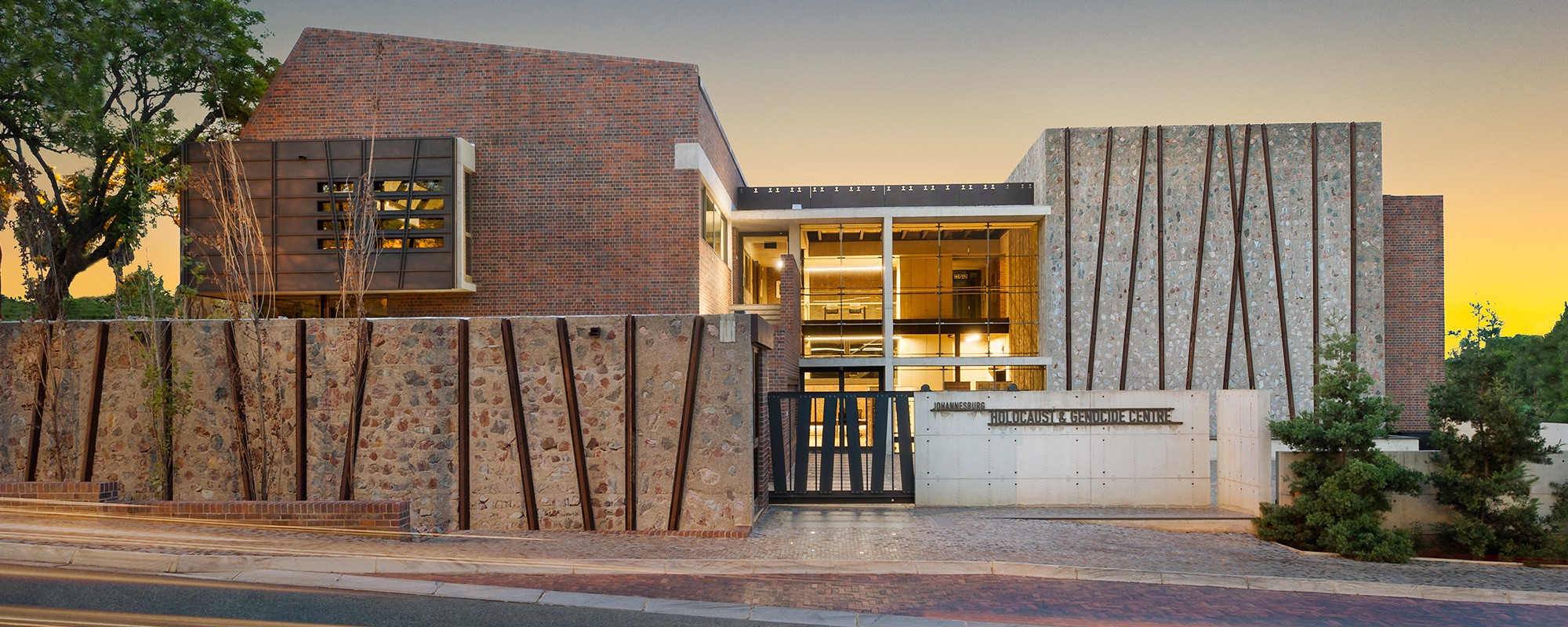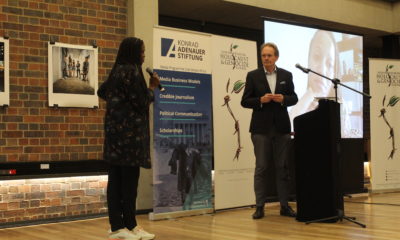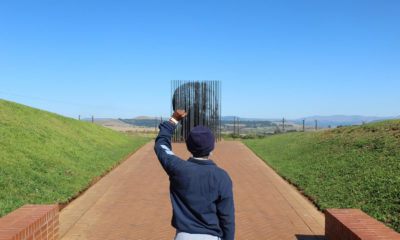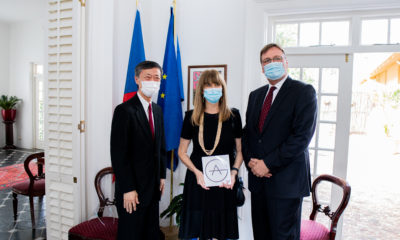
Featured Item

Engaging Jewish museums ensures that history isn’t a mystery
“A visit to a museum is a search for beauty, truth, and meaning in our lives.” As we commemorate International Museum Day on 18 May, these words from Israeli-born American illustrator, writer, and blogger Maira Kalman resonate with curators and employees of Jewish museums in South Africa.
“Though the Holocaust happened more than 70 years ago, the history of the Holocaust and the lessons we learn from that history are useful in looking at our own history through a contemporary lens,” says Orli Barnett, a museum educator at the Cape Town Holocaust & Genocide Centre (CTHGC).
The International Council of Museums has organised International Museum Day every year since 1977 to raise awareness about museums as a crucial means of cultural exchange, enrichment of cultures, and development of co-operation and mutual understanding.
The three Holocaust centres in South Africa – the Johannesburg Holocaust & Genocide Centre (JHGC), the CTHGC, and the Durban Holocaust & Genocide Centre (DHGC) – are constantly working to draw people into their museums and educate them. They do this to keep the memory of the Holocaust alive, and share lessons learnt from history.
The JHGC holds annual commemoration events on days such as Yom Hashoah. “We also have events for survivors, so they can share their stories,” says Jordan Saltzman, collections manager at the JHGC.
The South African Holocaust centres bring to light other atrocities and genocides that might not otherwise get much publicity, like that of the 1994 genocide against the Tutsi in Rwanda.
“We have a section in our exhibition about South Africa’s apartheid history and antisemitism,” says Barnett.
The South African Jewish Museum (SAJM) is primarily a narrative museum. “The modern museum that was developed by Mendel Kaplan tells the story of our community,” says Gavin Morris, the director of the SAJM. “It primarily uses modern audiovisual elements to convey that story, and effectively tells the narrative of the South African Jewish community in Lithuania and then within the Old Shul, the very first shul that was built in the country. We have on display some of the oldest Judaica within the community in South Africa.”
The Isaac and Jessie Kaplan Centre for Jewish Studies and Research in Cape Town has a substantial physical archival collection.
“We have records relating to immigration, arrivals information, personal papers, and institutional records,” says Professor Adam Mendelsohn, the director of the centre. “The collection has been built over decades and decades. We do have extensive online databases which are mostly genealogical focused, looking at cemetery records or shipping and immigration records. They are widely used by genealogists and people researching their family history. In partnership with the SAJM, we also have the SAJM archives, an online archive primarily with photographs, digitised documents, and film.”
“We support the history curriculum by teaching Grade 9s about World War II, the outbreak of war, the Holocaust, and the Final Solution,” says Barnett. “Grade 11 history students come back to the centre to learn about race theory and case studies about how countries have misused racism.”
Though the DHGC also caters to Grade 9 and 10 students, it offers a Grade 7 programme which specifically focuses on the story of Anne Frank as well as a programme for adult groups. The DHGC recently created a transport fund, enabling it to invite less privileged schools to visit the centre. “Each year, about 5 000 students come through our centre,” says Tanya Altshuler of the DHGC’s communications and marketing department.
Says Saltzman, “We try to share lessons that have a broader message. Though some schools come for the history portion, a lot of the schools come here because we deal with empathy, social action, and personal choices.”
The SAJM’s core function is to bring school children to the museum to learn about Judaism and Jewish communities in South Africa over many generations, says Morris. “We focus primarily on disadvantaged schools in which children may not ever come into contact with a Jewish person. We bring them to the museum and make them a kosher meal. We arrange transport. There’s no cost to the schools whatsoever.”
Morris says one of the museum’s most difficult tasks is encouraging people to visit it. “South Africans are generally not known as museum-goers,” he says.
The Holocaust centres use a variety of platforms to encourage people to come and learn about the Holocaust. “We advertise in various publications, tourism publications, online, through our website, and on social media,” says Barnett.
Says Altshuler, “Word of mouth is our best form of advertising. We also market the centre through social media as well as the Durban Tourism Portal and editorial in various publications.”
The SAJM gives concierges and tour guides specialised tours of the museum so they can tell tourists about it and arrange tours if visitors are interested.
“We have an amazing network of volunteers among Holocaust survivors or their descendants, and Rwandan-genocide survivors,” says Saltzman. “The centre forms a hub for them. Pre COVID-19, we had a Holocaust survivors’ group which would meet every month. With lockdown, we went online, doing loads of webinars, and now we’re going back to having things in the centre. We have people who are maybe more interested in the Armenian genocide who will come to us. We have a lovely coffee shop, so that helps.”
Asked how to keep the centre relevant, Altshuler says the DHGC teaches about modern-day issues such as the consequences of prejudice, racism, antisemitism, homophobia, and the dangers of indifference, apathy, and silence with a wider focus on human rights, racism, and xenophobia.
The SAJM runs regular temporary exhibitions which appeal to a broad South African audience. “For example, we’ve got an Ali Bacher exhibition at the moment,” says Morris. “This is of interest not just to the Jewish community, but anybody who is interested in South African cricket.”










